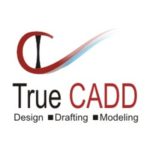Artificial Lighting Modeling & Simulation by TrueCADD
Project's Summary
Artificial Lighting Modeling & Simulation, executed by TrueCADD, represents a significant advancement in the quest for energy efficiency in architectural design. As energy consumption continues to rise globally, the need for innovative solutions in artificial lighting has become paramount. This project showcases how a thorough approach to energy modeling and analysis can lead to substantial improvements in energy performance.

The project commenced with the collection of essential inputs, primarily 2D drawings in PDF format provided by the client. These drawings formed the foundation for TrueCADD's energy modeling process. The team meticulously examined the details of luminaries and fixtures, ensuring that they were accurately represented in the subsequent 3D model. This initial phase is crucial, as it lays the groundwork for effective energy simulation and analysis.
TrueCADD leveraged state-of-the-art software tools to conduct thorough energy simulations and analyses of the artificial lighting system. The objective was clear: to optimize energy consumption while maintaining high lighting quality. By evaluating various factors—including lighting intensity, fixture placement, and overall energy efficiency—the team derived valuable insights that informed design adjustments, ultimately leading to enhanced performance.
Collaboration with the client was a key element throughout the modeling and analysis process. TrueCADD's team worked closely with the client to ensure that their preferences and requirements were fully integrated into the design. The selection of fixtures and luminaries was guided by the client's suggestions, resulting in a cohesive design that aligns with their vision and sustainability goals.
In conclusion, the artificial lighting modeling and simulation project by TrueCADD exemplifies a commitment to integrating sustainable practices within architectural design. Through advanced modeling techniques and energy analysis, the team successfully created a comprehensive 3D model that facilitated a detailed examination of energy consumption. This project not only underscores TrueCADD's expertise but also highlights the growing importance of energy-efficient design in contemporary architecture.
Read also about the Golf Club House at Jay Peak Resort - Vermont project

